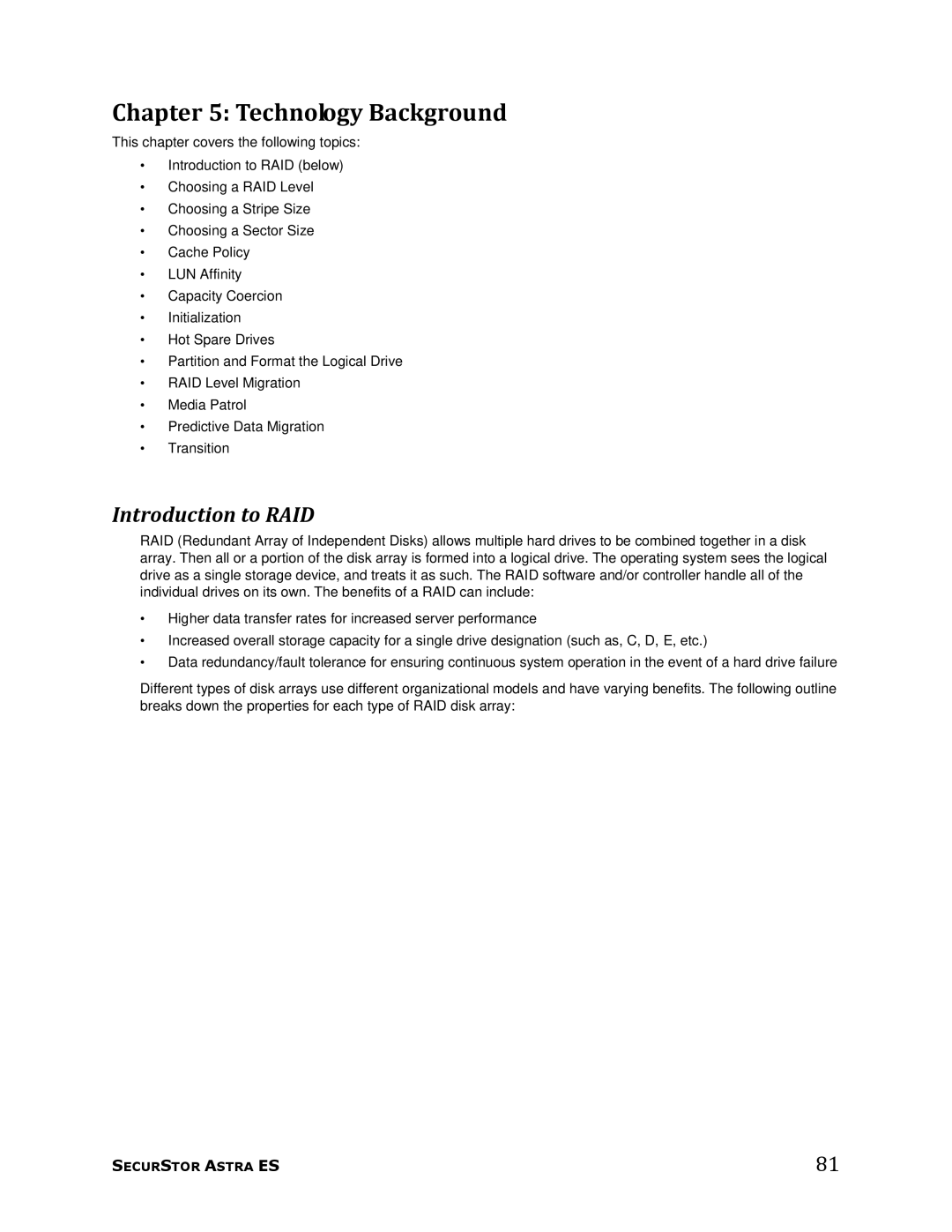Chapter 5: Technology Background
This chapter covers the following topics:
•Introduction to RAID (below)
•Choosing a RAID Level
•Choosing a Stripe Size
•Choosing a Sector Size
•Cache Policy
•LUN Affinity
•Capacity Coercion
•Initialization
•Hot Spare Drives
•Partition and Format the Logical Drive
•RAID Level Migration
•Media Patrol
•Predictive Data Migration
•Transition
Introduction to RAID
RAID (Redundant Array of Independent Disks) allows multiple hard drives to be combined together in a disk array. Then all or a portion of the disk array is formed into a logical drive. The operating system sees the logical drive as a single storage device, and treats it as such. The RAID software and/or controller handle all of the individual drives on its own. The benefits of a RAID can include:
•Higher data transfer rates for increased server performance
•Increased overall storage capacity for a single drive designation (such as, C, D, E, etc.)
•Data redundancy/fault tolerance for ensuring continuous system operation in the event of a hard drive failure
Different types of disk arrays use different organizational models and have varying benefits. The following outline breaks down the properties for each type of RAID disk array:
SECURSTOR ASTRA ES | 81 |
